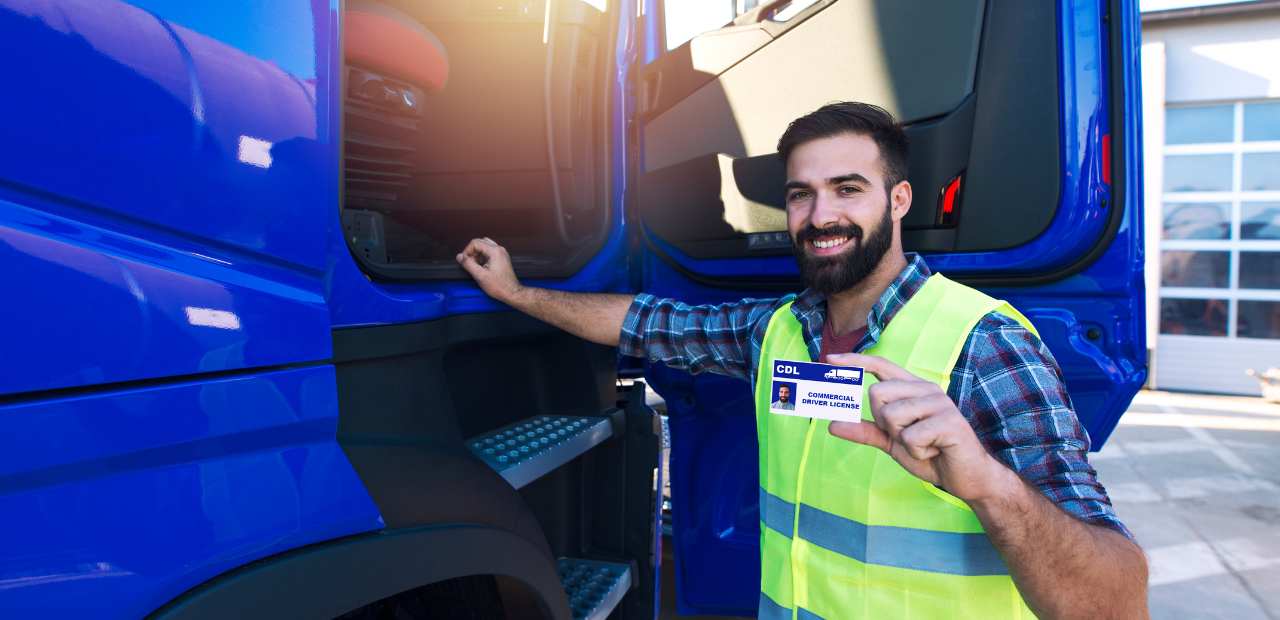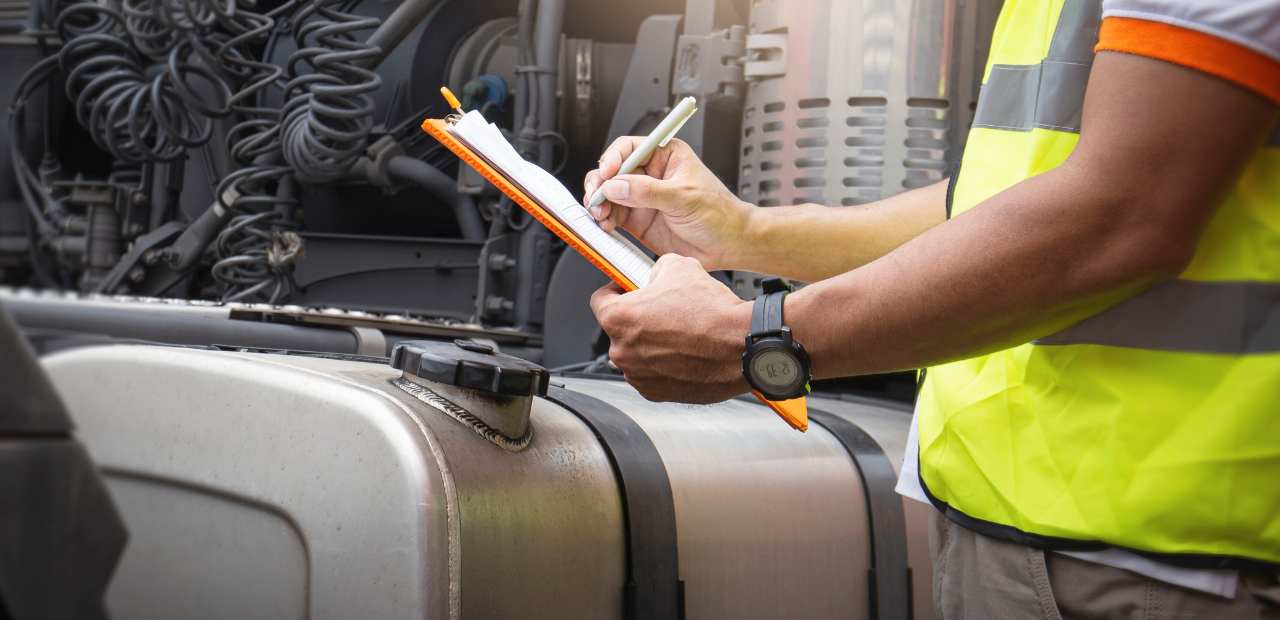
If you’re looking to obtain a Class A Commercial Drivers License (CDL) you’re taking the step towards a career that offers independence, adventure and the potential for a stable income.
This guide is designed to help you navigate the process of getting your CDL, which is essential for driving commercial vehicles like 18 wheelers.
Introduction to the Class A License
The Class A CDL goes beyond being a drivers license. It opens up opportunities for a career that extends far beyond just having a job.
With this license you’ll have the ability to drive vehicles with a gross combination weight rating (GCWR) over 26,001 pounds and tow trailers or vehicles weighing more than 10,000 pounds.
Having this license enables you to handle trucks and transport loads while carrying responsibilities and enjoying fulfilling outcomes.
What Does a Class A Driver Do?
A person holding a Class A Commercial Drivers License (CDL) also known as a Class A driver is qualified to operate types of vehicles.
These vehicles include tractor trailers, truck and trailer combinations, tanker vehicles, flatbed trucks and livestock carriers.
The main role of these drivers involves transporting goods and materials over distances. From long interstate hauls to local routes, one of the responsibilities of these professionals is to prioritize vehicle safety by conducting inspections and maintenance checks.
They also have the task of loading and unloading cargo, keeping driving records in accordance with the Hours of Service regulations set by the Department of Transportation and planning routes using navigation tools.
Requirements for Obtaining a Class A License
Before starting this journey it is important to understand and fulfill certain eligibility criteria:
- Age Requirements: For interstate driving you must be at least 21 years old. However for driving this age requirement may vary depending on your state—typically requiring individuals to be at least 18 years old.
- Legal Requirements: Meeting legal requirements is essential when it comes to one’s driving record. This implies that it is important to have a record without any instances of driving under the influence (DUI) reckless driving or any traffic violations.
- Health Requirements: In terms of health requirements it is necessary to go through an examination administered by the Department of Transportation (DOT) to ensure that you possess the capabilities required for the job. This examination assesses factors such, as vision, hearing and overall physical fitness.
- Residency and Identification: To confirm your eligibility to work and drive in the United States you will need to provide proof of residency and identification such as a driver’s license and Social Security number.
Understanding CDL Classes
Having an understanding of the distinctions between different CDL classes is essential when selecting your desired career path:
- Class A CDL: If you aim to drive large vehicles like tractor trailers, truck and trailer combinations, tanker vehicles or livestock carriers then a Class A CDL is what you should focus on. It offers flexibility for long haul trucking. Provides the most opportunities in driving careers.
- Class B CDL: For those operating smaller vehicles such as straight trucks, large passenger buses, segmented buses, box trucks or dump trucks with small trailers a Class B CDL would be more suitable. It caters well to deliveries, city bus driving roles or tour bus operations.
- Class C CDL:If you’re interested in vehicles that fall outside the categories of Class A or B but still require a Commercial Drivers License (CDL) such as those designed for transporting 16 or more passengers or hazardous materials there are considerations to keep in mind.
Opting for a Class A CDL opens up a range of job opportunities compared to Class B and C. It’s like having a master key in the world of driving granting you the ability to operate an array of vehicles. This provides flexibility and more options for your career in trucking.
Required Documentation for Class A License

When it comes to obtaining a Class A CDL, gathering the required documentation is an essential step. Here’s what you’ll need to prepare:
- Personal Identification and Proof of Residency: You’ll require documents such as a driver’s license and Social Security card. Additionally proof of residency in your state like utility bills or lease agreements will be required.
- CDL Application Forms: Obtain and complete the CDL application forms, from your Department of Motor Vehicles (DMV) office or their website. These forms will ask for your information about drivers license details and driving history.
- Medical Examination Report: Undergoing a Department of Transportation (DOT) examination is compulsory. You must provide the completed Medical Examination Report prepared by a certified examiner. This report confirms that you are physically fit to operate vehicles.
- Proof of Training: To prove that you have completed the training to obtain a Commercial Drivers License (CDL) certain states require documentation, from a truck driving school or a certified CDL training program.
- Additional Documentation for Endorsements: If you are aiming for the types of trucking jobs that require certifications, such as hazardous materials or tanker operations you may need to provide extra paperwork like background checks or specialized training certificates.
It is advisable to organize these documents in advance to ensure an application process and avoid any delays.
The Knowledge Test
Before you can start driving it is important to understand the aspects of obtaining your CDL. This includes preparing for the written knowledge test:
| Topic | Description | Importance |
|---|---|---|
| Traffic Laws | Understanding rules of the road specific to large commercial vehicles. | Essential for legal and safe driving. |
| Vehicle Safety | Conducting pre-trip inspections, recognizing mechanical issues, and vehicle maintenance. | Crucial for the safety of the driver and others on the road. |
| Logistics and Cargo Handling | How to load, secure, and unload cargo efficiently and safely. | Important for the integrity of goods and safety. |
| Emergency Protocols | Procedures to follow in case of accidents or mechanical failures. | Vital for handling unexpected situations safely. |
| Special Considerations for Large Vehicles | Techniques for braking, turning, and managing blind spots unique to large vehicles. | Necessary for maneuvering and operating big rigs effectively. |
- Traffic Laws and Safe Vehicle Operation: A thorough understanding of rules of the road is essential regardless of the license type you plan on acquiring. Safe vehicle operations include conducting pre-trip inspections, recognizing potential mechanical issues, and understanding the importance of vehicle maintenance.
- Logistics and Handling Cargo Safely: Additionally you will need to learn about logistics and cargo handling including how to load and unload cargo safely and efficiently.
- Emergency Protocols: You will also need to be prepared to handle unexpected situations. Emergency protocols will need to be understood so you are prepared for situations such as accidents or mechanical failures.
- Special Considerations for Large Vehicles: Since handling vehicles requires specialized skills and knowledge, part of your training will involve learning braking techniques specific to big rigs, mastering turning maneuvers and managing blind spots effectively.
To thoroughly prepare for the written exam portion of obtaining your CDL license make use of resources such as your state’s CDL manual and practice tests.
Tips for Succeeding On the Written Exam
When it comes to obtaining your Class A CDL the written exam holds importance. Here are some strategies to help you succeed:
- Understand the Format: Make sure you’re familiar with the multiple choice format that covers all the topics you’ve studied.
- Practice Tests: Take advantage of practice tests to get a sense of the types of questions you’ll encounter and identify areas that require review.
- Study Smart: Focus on understanding concepts rather than simply memorizing facts. Our CDL practice tests include instant feedback to ensure you fully grasp the topics being presented.
- Time Management: Keep an eye on the clock during the exam to ensure you have time to carefully consider each question.
- Stay Calm: Manage test anxiety by taking deep breaths and maintaining focus on the task at hand.
On the day of the exam, arrive with all identification carefully read each question and trust in your preparation.
Moving onto Hands On Training

After completing the written exam hands on training becomes your step where theoretical knowledge is put into practice.
In this phase you’ll need to consider a few factors:
- Choosing the Right Training School: It’s crucial to select a school, with experienced instructors who have a proven track record of helping students pass their CDL exams.
- Mastering Essential Skills: During your training you’ll cover areas such as vehicle inspection, basic maneuvers like backing up and turning, driving under road conditions and following safety practices.
- Training Duration: The length of training programs may vary. The primary focus should always be on acquiring the skills to become a competent and safe driver.
Successfully Completing the Skills Test
The skills test represents the step in obtaining your Class A License. It typically involves:
- Thorough Pre Trip Inspection: Showcase your ability to meticulously inspect your vehicle for any safety concerns.
- Demonstrating Control Skills: Exhibit your proficiency in handling the truck during situations like parking and navigating around obstacles.
- On Road Driving Test: Prove that you can drive safely in real life traffic scenarios by adhering to traffic laws and demonstrating vehicle control.
Tips for Achieving Success involve staying composed throughout the test conducting a trip inspection practicing various maneuvers regularly and paying close attention to the examiners instructions.
Expanding Your Opportunities with Endorsements
Adding endorsements to your CDL opens up a wide variety of job prospects for you. Many Class A CDL holders seeking higher pay also choose to obtain endorsements such as Hazardous Materials (H) Tanker (N) Doubles/Triples (T) Passenger (P) and School Bus (S). To acquire these endorsements you will need to pass additional written knowledge tests. In some cases skills tests.
Cost and Fees
There are costs involved when pursuing a Class A License:
- CDL Training School: Expenses range from $3,000 to $7,000. Selecting the right truck driving school is important.
- Application Fees: The fees vary by state. Generally range between $20 and $100.
- Test Fees: Varies by state. Some states charge for each attempt at the written and skills tests.
- Medical Examination: Typically costs between $50 and $100.
It’s worth exploring financial aid options such as company sponsored training, grants, scholarships or payment plans offered by schools.
Job Opportunities with a Class A License
Having a Class A CDL opens up job opportunities in the trucking industry:
- Long Haul Trucking: This option is suitable for individuals who enjoy traveling and don’t mind being on the road for extended periods of time.
- Delivery: If you prefer to be home every night, you can consider driving for local delivery services or retailers.
- Specialized Transport: With additional endorsements you can enter fields, like hazardous material transport or tanker work.
- Management: Trucking companies often offer opportunities for drivers to transition into managerial roles allowing them to utilize their expertise in a different capacity.
The salary range for Class A CDL drivers typically falls between $45,000 and $65,000 per year. However actual earnings may vary based on factors such as experience, location and the type of driving involved.
Maintaining Your Class A License
To keep your Class A CDL valid and up to date there are an steps to follow:
- Regular Renewal: This involves submitting a renewal application undergoing a DOT exam to ensure fitness for driving and paying the renewal fees.
- Compliance with Regulations: It is crucial to adhere to Hours of Service (HOS) regulations, undergo drug and alcohol testing as required by law and maintain accurate logbooks documenting your driving activities.
- Continuing Education: Staying informed about industry changes and advancements in trucking technology is essential for growth. Keeping up with the evolving demands of the industry can lead to further growth.
By following these guidelines, for maintaining your CDL you can ensure that you are meeting all requirements while staying updated within the trucking industry.
/rating_on.png)